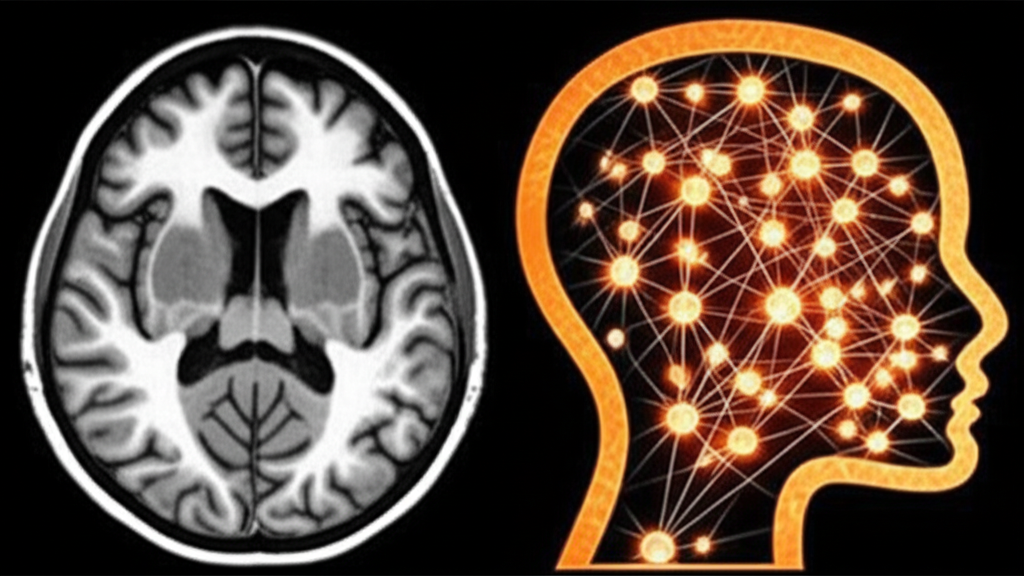The notion that humans only use 10% of their brain is a remarkably persistent myth. You’ve likely heard it repeated in movies, books, or casual conversation. This intriguing idea suggests a vast, untapped potential hidden within our skulls, just waiting to be unlocked. However, neuroscientists are clear: this is simply not true. Brain scans and studies consistently show that humans use virtually all of their brain, not simultaneously at every given moment, but over the course of a day and week across various activities. For more on how this myth was debunked, check out resources from neuroscience organizations. The myth likely gained traction from misinterpretations of early research or perhaps a desire to believe in extraordinary hidden capabilities.
Let’s indulge in a thought experiment. If the 10% myth is false, what if we could hypothetically access or optimally utilize all brain functions simultaneously or with unprecedented intensity? Not because there are unused parts, but because we could push existing functions far beyond their normal limits. What would that incredible, yet potentially terrifying, reality look like?

The Reality: How Your Brain Truly Functions
Your brain is an incredibly complex and dynamic organ. It’s constantly active, even during sleep. Different regions are specialized for different tasks – processing sight, language, movement, memory, and more – but they work together in intricate, dynamic networks. Think of your brain not as a single light switch, but as a massive, sophisticated control panel where different lights and systems are engaged as needed.
An excellent analogy is that of an orchestra. Different sections (brain regions) play their specific parts (functions) at various times, but the entire orchestra (brain) is capable and used to perform a full symphony (a complex task or thought). The brain is highly efficient. It doesn’t keep all systems running at maximum capacity simultaneously because it’s unnecessary for most tasks and demands an immense amount of energy. Specialization and selective activation are key to its operation.
Different brain areas are dedicated to specific roles. The prefrontal cortex handles decision-making and planning. The hippocampus is crucial for forming new memories. The cerebellum coordinates movement. The visual cortex processes what you see. This distributed yet integrated system is why even simple tasks like walking and talking involve multiple brain regions working in concert. The brain is also incredibly energy-hungry, consuming about 20% of the body’s total energy, despite making up only about 2% of its weight – and that’s at ‘normal’ operational levels.
Hypothetical Scenario: What Could “100% Use” Beyond the Myth Entail?
In this purely fictional thought experiment, “100% use” doesn’t mean activating empty space. It means pushing the brain’s existing capabilities – memory, processing speed, sensory input, etc. – to their absolute theoretical maximum, potentially simultaneously or with a level of intensity far beyond our current understanding or ability. This is pure speculation based on a fictional premise.
Amplified Cognitive Abilities
- Memory: Imagine perfect, near-total recall of everything you’ve ever experienced, read, or learned (akin to eidetic memory but magnified). You could process and store vast amounts of information instantaneously.
- Learning: Absorbing complex subjects or mastering multiple languages might take minutes or hours, rather than years.
- Problem Solving & Logic: Unparalleled analytical capabilities, processing countless variables concurrently, and identifying complex patterns and solutions almost instantaneously.
- Creativity & Intuition: Accessing deeper levels of subconscious thought, leading to sudden, groundbreaking insights and artistic creations unlike anything seen before.
Enhanced Sensory and Motor Control
- Heightened Senses: Seeing colors beyond the normal visible spectrum, hearing frequencies currently inaudible to humans, experiencing touch, taste, and smell with astonishing detail and sensitivity.
- Motor Mastery: Perfect coordination, balance, and reflexes, allowing for physical feats or intricate manipulations that seem superhuman.
- Proprioception: An incredibly precise awareness of your body’s position and movement in space at all times.
Emotional, Social, and Beyond
- Emotional Intelligence: A profound understanding and control over one’s own emotional state, potentially leading to perfect empathy and immediate understanding of others’ feelings based on subtle cues.
- Communication: Enhanced ability to articulate complex thoughts with perfect clarity, understand nuances instantly, and potentially even process subtle signals akin to ‘reading minds’ based on micro-expressions and physiology.
- Consciousness: This heightened state might lead to an altered or expanded perception of reality itself, fundamentally changing how one experiences the world and existence.

The Significant Potential Downsides and Challenges
While the hypothetical benefits are extraordinary, the challenges and potential negative consequences would be equally immense, if not more so.
- Information and Sensory Overload: The brain is designed to filter the constant flood of stimuli. Without this crucial filtering, a constant, heightened input from all senses and cognitive processes operating at maximum could be utterly overwhelming. This might lead to confusion, paralysis, or a complete mental breakdown.
- Emotional Intensity: Experiencing all emotions at their absolute peak could be incredibly difficult, oscillating between states of unimaginable bliss and unbearable agony.
- Massive Energy Demands: The brain is already highly energy-intensive. Pushing all functions to maximum would require an astronomical amount of oxygen and glucose, likely unsustainable by the human body, potentially leading to rapid burnout or system failure.
- Loss of Filtering and Specialization: If all brain areas are “on” and operating at maximum indiscriminately, the brain might lose its efficiency. The crucial ability to filter irrelevant information and focus resources on specific tasks could be compromised, resulting in chaos instead of enhanced function.
- Physical Limitations: Even with a ‘super brain,’ the physical body remains a constraint. Enhanced perception might reveal the body’s fragility, while advanced motor control is still limited by muscle strength, bone structure, and lifespan.
- Existential & Social Implications: A person with such abilities would be fundamentally different. How would they integrate into society? Would they feel isolated? Could their actions, even if well-intentioned, have unintended, massive consequences for the world due to their advanced capabilities?
The Brain We Have Is Already a Marvel
Despite the allure of the hypothetical “100% use” scenario, it’s crucial to remember that the human brain, as it functions now, is already a result of millions of years of evolution. It is an incredibly complex, efficient, and awe-inspiring organ. Its ‘normal’ operation involves the sophisticated interplay of billions of neurons and trillions of connections, allowing for everything from basic survival instincts to abstract thought, language, and complex problem-solving.
A key feature of the real brain is neuroplasticity. This is its remarkable ability to adapt, learn, and reorganize itself throughout life. Every time you learn a new skill, remember a fact, or adapt to a new situation, your brain is changing physically by forming new connections and strengthening existing ones.
Rather than chasing a myth, real ways to enhance brain function focus on supporting and optimizing the brain’s actual capabilities. These include:
- Learning new skills (languages, instruments, etc.)
- Regular physical exercise
- Proper nutrition and hydration
- Getting sufficient, quality sleep
- Practicing mindfulness or meditation
These activities leverage the brain’s natural plasticity and efficiency to improve cognitive function within its evolved framework.
Conclusion: Appreciating the Actual Brain
The myth that we only use 10% of our brain is a captivating but scientifically false idea. However, using it as a springboard for a thought experiment allows us to explore fascinating hypothetical capabilities like perfect memory, rapid learning, and heightened senses, painting a picture of what a ‘super-optimized’ brain might achieve.
Yet, this exploration also reveals significant potential downsides. The brain’s current architecture, with its filtering, specialization, and energy management, is essential for functional consciousness. Overload, emotional extremity, and unsustainable energy demands highlight why unlocking all functions simultaneously might be detrimental or even impossible within our biological limits.
Ultimately, the human brain as it exists is a marvel of evolution. Its true potential isn’t about activating unused sections, but about understanding, nurturing, and optimizing the incredible capabilities it already possesses through lifelong learning, healthy habits, and engaging with the world.
FAQ
Q: Is there any scientific basis for the 10% brain myth?
A: No, there is no scientific basis. Neuroscientists confirm that we use virtually all parts of our brain, though not all at the exact same moment, across daily activities.
Q: If we used “100%” of our brain hypothetically, would we become telekinetic or gain superpowers?
A: The hypothetical scenario focuses on amplifying known cognitive and sensory functions. While pop culture often links the myth to superpowers, there’s no scientific evidence or even theoretical basis related to brain function that suggests abilities like telekinesis are possible.
Q: How does the brain decide which parts to use?
A: Brain activity is highly dynamic and task-dependent. When you look at something, the visual cortex is active. When you plan a task, the prefrontal cortex is involved. These areas communicate in complex networks, activating the regions needed for the specific task at hand.
Q: Can we increase our brain power?
A: While you can’t suddenly access ‘unused’ portions, you can enhance your brain’s efficiency and function through learning, exercise, good nutrition, sleep, and challenging cognitive tasks. These activities promote neuroplasticity and strengthen neural networks.
Q: Why does the 10% myth persist?
A: The myth is compelling because it suggests untapped potential within everyone. It’s been spread widely in popular culture and is easier to grasp than the complex reality of how the brain actually functions.

